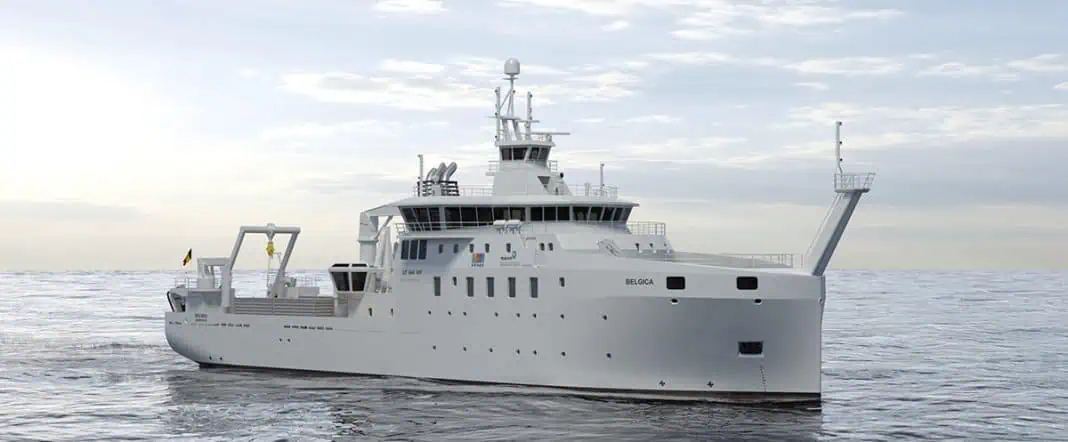After more than 36 years of service the time has come for our RV Belgica to be replaced. To that end the Belgian Federal Government decided to build a new modern research vessel. Design of the new research vessel by Freire Shipyard and Rolls Royce Marine As (ship designer).
It will be operational mid-2021 and will be able to further support the marine research community for the next 30 years.
After a contest for schools and a voting by the general public, the new ship will continue to bear the historic and symbolic name Belgica.
The project was realized through a collaboration between the Royal Belgian Institute of Natural Sciences (RBINS), the Ministry of Defence and the Belgian Science Policy Office (BELSPO).
Research Vessel Specifications
The new research vessel will be owned by the Belgian State represented by the Belgian Science Policy Office (BELSPO). The OD Nature of the Royal Belgian Institute of Natural Sciences (RBINS), in collaboration with the Ministry of Defense, will be responsible for the management of the ship.
The characteristics of the research vessel were determined based on a survey of the marine scientific community and (potential) users of the vessel.
The new research vessel will be multidisciplinary and will be able to perform various research disciplines (fisheries, biology, chemistry, …) and will be equipped with state-of-the-art scientific equipment. Compared to the RV Belgica, it will offer more space for scientists and for research. It will spend more time at sea each year (about 300 days a year) and cover a wider research area (North Sea, Atlantic Ocean, Mediterranean Sea and Arctic area in summer). It will be built to the highest standards of energy consumption, emissions (ecological ship) and noise production (acoustic silence).
The vessel will also serve as a platform for European cooperation and will be adapted to the existing European modern marine research infrastructures. This will bring new opportunities for Belgian researchers, such as research requiring the use of remote-controlled or autonomous vehicles (ROVs – remotely operated vehicle or AUVs – autonomous underwater vehicles).
Specifications:
- Length: 71.40 m
- Width: 16.80m
- Draft: 4.80 m
- Autonomy: 30 days
- Number days at sea: approximately 300 days / year
- Capacity for scientists and crew: 28 + 12
- Multipurpose research vessel: fisheries, geology, chemistry, biology, oceanography etc
- Study area: latitude 80° north (Spitsbergen) and latitude 28° north, bounded in the west by the mid-Atlantic ridge and in the east by longitude 36° east including the Mediterranean.
- Possibility of using AUVs (autonomous underwater vehicles), ROVs (remote-controlled vehicles), tripods, buoys and other scientific equipment to be put at sea
- Possibility to do research at water depths of 5000 m
- Dynamic Positioning Class 2
- Acoustically Silent (DNV-GL Silent R)
- Ice Reinforcement Class ICE-1C
- 2 dropkeels
- Laboratory space(> 400m²): 5 dry labs, 3 wet labs, one scientific coordination and data acquisition room
- Space for containers (7 * ISO20 containers).












